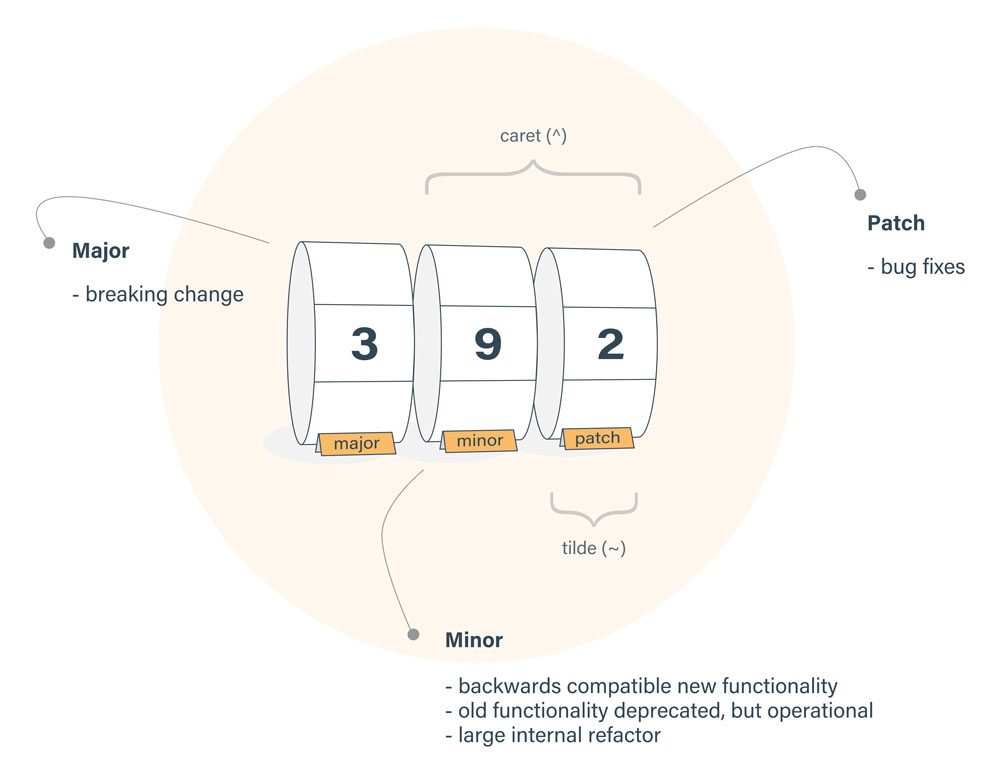package.json 版本说明
Using semantic versioning to specify update types your package can accept

| 版本格式 | 说明 |
|---|---|
| ~version | Approximately equivalent to version,update you to all future patch versions, without incrementing the minor version.~1.2.3 will use releases from 1.2.3 to 小于1.3.0. |
| ^version | Compatible with version, will update you to all future minor/patch versions, without incrementing the major version. ^2.3.4 will use releases from 2.3.4 to 小于3.0.0. |
| latest | Obtains latest release |
| 1.2.x | 1.2.0, 1.2.1, etc., but not 1.3.0 |
dependency vs devDependencies
dependency 会被打包到生产环境中
npm install <package...>yarn add react
devDependencies 只在开发阶段使用,不会打包到生产环境
npm install some_module --save-devyarn add <package...> [--dev/-D]
全局安装
npm install <package...> -gyarn global add <package...>
package.json
// If you plan to publish your package, the most important things in your package.json are the name and version fields as they will be requiredhomepageThe url to the project homepage.mainThe main field is a module ID that is the primary entry point to your program.{"name": "test-rp","version": "1.0.0.1","homepage": "https://github.com/owner/project#readme","license" : "BSD-3-Clause","main": "foo.js",}
and 模块文件结构及 引用方式
当我们在前端页面引用时,是引用 es 文件夹里面的 某个模块还是 lib 文件夹下的模块?
import { Card } from "antd";//使用import 默认就使用es 文件夹里面的模块
and 模块文件结构
+-- dist+-- es+-- lib+-- package.jsonpackage.json{"main": "lib/index.js","unpkg": "dist/antd.min.js","module": "es/index.js",}